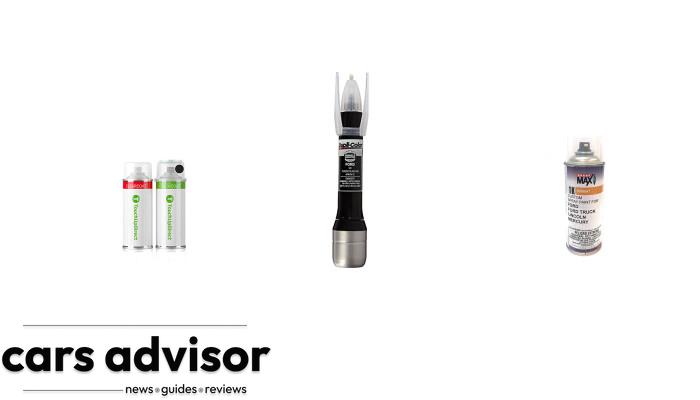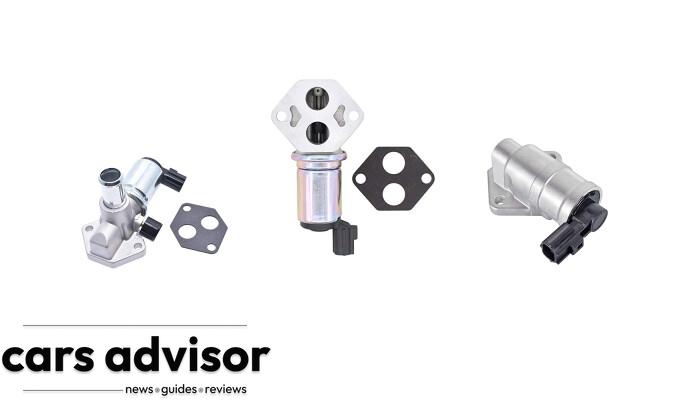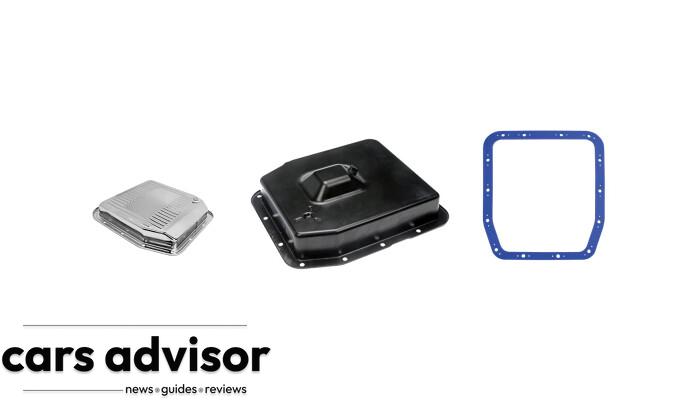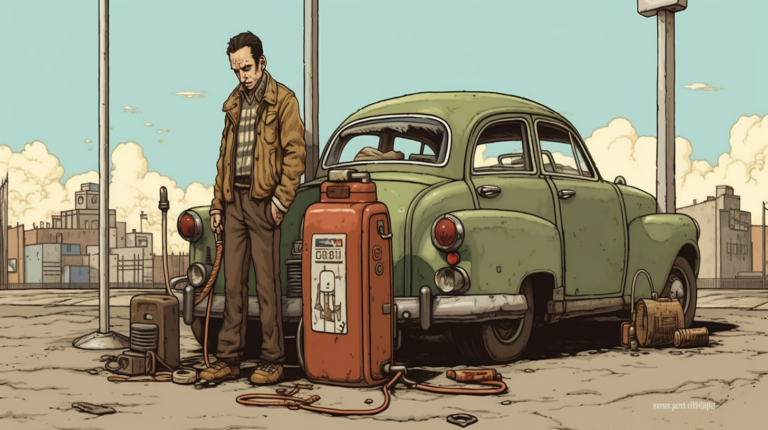Experiencing a car that won’t move in any automatic gear transmission can be both frustrating and worrisome. This issue could stem from various problems, such as low transmission fluid levels, clogged filters, or more serious internal malfunctions.
In this blog post, we’ll explore the common causes behind automatic transmission failures and provide helpful tips to diagnose and fix these issues. Let’s dive into understanding what might be preventing your vehicle from moving smoothly and getting you back on the road with confidence.
TLDR
1. The most common cause of a car not moving in any gear in an automatic transmission is a low level of transmission fluid.
2. Lack of transmission fluid can also cause the car’s automatic transmission not to move when any gear is engaged.
3. A clogged transmission filter can be a reason why the car’s automatic transmission won’t move in any gear.
4. A faulty automatic transmission control unit can cause the car not to move in any gear.
5. Other internal problems, such as hydraulic pump failure, cracked flywheel, failed sun-gear shell, worn-out clutch plates, or linkage problems, can also cause the car not to move in any gear.
6. A variety of issues in the electrical system can cause an automatic car not to move in any gear.
7. A clogged fuel filter can also prevent an automatic car from moving in any gear.
8. Vehicles equipped with an automatic transmission won’t shift out of park unless the transmission is functioning correctly.
9. In a manual transmission car, a worn-out clutch or a problem with the gear linkage can cause the car not to move.
10. If the car goes into gear, but does not move, it could be a problem with the manual transmission.
Understanding Automatic Transmission Failure
Automatic transmission failure can occur due to various reasons, such as low transmission fluid levels, clogged filters, malfunctioning control units and torque converters or worn-out clutches.
Low Transmission Fluid Levels
One of the most common culprits behind a car not moving in any automatic gear transmission is low transmission fluid levels. The transmission fluid serves as both a lubricant and hydraulic medium, enabling smooth operation of various components such as gears, clutches, and valves. When there isn’t enough fluid in the system, these parts may struggle to function properly or could even be damaged due to increased friction and heat.
Low transmission fluid can be caused by various factors including leaks from worn seals or gaskets, inadequate maintenance practices like neglecting regular checkups and using poor-quality fluids that deteriorate quickly.
For instance, imagine you unknowingly drove over a sharp object on the road causing damage to your car’s pan gasket or cooler lines – this would likely lead to a slow but steady loss of transmission fluid resulting in noticeable performance issues like unresponsive gear shifting or delayed engagement.
In such cases, topping off the reservoir with recommended high-quality transmission fluid can help restore proper functionality; however, it’s crucial to address any underlying issues causing the leak for long-term reliability.
Clogged Transmission Filters
A clogged transmission filter can cause a lot of problems, including preventing the car from moving in any gear. The purpose of the transmission filter is to keep debris and contaminants out of the fluid that flows through your car’s automatic transmission. Over time, this filter can become clogged with dirt and other particles, leading to a restriction in the flow of fluid.
When this happens, your car may experience delayed engagement when shifting gears or not move at all. This issue can be solved by inspecting and cleaning or replacing the clogged filter promptly. Some common signs of a clogged transmission filter include strange noises coming from under the hood as well as intermittent slipping or jerking during acceleration.
Regular maintenance checks will help you avoid such issues caused by transmission filters getting blocked up over time – meaning it is essential to get them checked regularly. It’s important to take care of your vehicle and have it serviced regularly by a mechanic who knows their way around an automatic transmission so they can spot potential problems before they occur!
Malfunctioning Control Units And Torque Converters
Malfunctioning control units and torque converters are two common culprits behind an automatic transmission failing to shift gears properly or not moving in any gear. The control unit, also known as the transmission control module, is responsible for interpreting electronic signals from various sensors that monitor engine and transmission activity. If the module fails, it can send incorrect signals to the transmission resulting in shifting problems or a complete failure to shift gears.
The torque converter is another vital component of an automatic transmission system. It sits between the engine and gearbox and uses a hydraulic fluid to transfer power from the engine to the wheels, allowing for smooth shifting between gears.
A faulty torque converter will result in slipping gears or lack of movement entirely if it’s unable to engage properly. Common signs of a faulty torque converter include rough shifts, shuddering when accelerating from idle speed, or strange noises coming from underneath your vehicle. Regular maintenance checks by a skilled mechanic can help catch these issues early on before they become costly repairs down the road.
Worn-out Or Defective Clutches
The clutch system plays a crucial role in an automatic transmission car’s ability to move. A worn-out or defective clutch can cause the car not to move, even when the engine is running correctly. Clutch problems usually arise due to wear and tear over time.
One common problem is a worn-out friction disc (clutch plate) that connects the engine flywheel to the transmission input shaft. When this happens, it makes it difficult for energy from the engine to transfer through the drivetrain, causing gear slippage and making it challenging for your vehicle to shift gears properly.
Another issue with clutches occurs when they become contaminated by oil or other fluids leaking into them. This contamination causes loss of friction between components and leads again to difficulty shifting gears. In general, if you notice any strange noises while shifting gears or if there is resistance while trying to change gears, then it may be time for a new clutch system.
Regular maintenance checks can help identify any potential issues before they become severe problems that can cause your car not moving in any automatic gear transmission at all.
Signs Of Automatic Transmission Failure
Watch out for signs of automatic transmission failure, such as unresponsive gear shifting, delayed engagement, burning smell from the transmission fluid, and strange noises or vibrations. Read on to learn more about diagnosing and fixing these issues to prevent further damage.
Unresponsive Gear Shifting
One sign of automatic transmission failure is unresponsive gear shifting. This can occur when the vehicle does not respond when you shift gears, or when it takes longer than usual for your car to engage with a new gear. If this happens, it could be an indication that there is something wrong with your car’s hydraulic pump or torque converter clutch. It could also be a problem with the transmission control unit or the vehicle sensors.
To diagnose and fix this issue, you may need to take your vehicle to a mechanic who has experience dealing with automatic transmissions. They will have access to diagnostic tools and equipment that can identify the exact problem causing the unresponsive gear shifting. Don’t ignore this warning sign as it could result in more costly repairs if left unchecked.
Overall, taking care of your car on a regular basis by keeping up with maintenance and check-ups can help prevent future problems like unresponsive gear shifting from arising in the first place.
Delayed Engagement
Delayed engagement is one of the signs that your automatic transmission may be failing. Here are a few things to consider if you’re experiencing delayed engagement:
- Low transmission fluid levels: One of the most common culprits for delayed engagement is low transmission fluid levels. If you notice this issue, check your transmission fluid levels and top up as necessary.
- Clogged transmission filters: A clogged filter can prevent proper fluid flow, leading to delays in gear shifting. Have your transmission filter inspected and cleaned or replaced if necessary.
- Malfunctioning torque converter: The torque converter is responsible for transmitting power from the engine to the transmission. If it’s malfunctioning, it can cause delays in gear shifting.
- Worn-out or defective clutches: Clutches are responsible for engaging and disengaging gears in automatic transmissions. Worn-out or defective clutches can cause delayed engagement or even total failure.
- Faulty sensors or control units: Your car’s onboard computer relies on sensors and control units to determine when to engage gears in the automatic transmission. Faulty sensors or control units can cause issues with gear engagement.
If you’re experiencing delayed engagement, it’s essential to get your vehicle diagnosed by a professional mechanic who specializes in automatic transmissions. They can help identify the root cause of the issue and recommend repairs as necessary.
Burning Smell From Transmission Fluid
Another sign of automatic transmission failure is a burning smell coming from the transmission fluid. This smell can indicate that the transmission is overheating, and it could be due to low levels of fluid or a clogged filter. If the burning smell persists, it’s important to pull over immediately and turn off the engine since this could lead to more extensive damage.
This issue might also occur if there is an electrical fault within the vehicle. The electric current flowing through various parts in your car while driving creates heat along with other problems leading to burnt smells, which may cause further issues as well. Regardless of the cause, ignoring a burning smell in your automatic car can result in serious consequences for both you and your vehicle.
It’s crucial to diagnose and address any potential transmission problems before they get worse. Regularly checking and changing out old or dirty transmission fluid can help prevent these issues from occurring altogether while ensuring optimal performance on the road.
Strange Noises Or Vibrations
Strange noises or vibrations are one of the signs of automatic transmission failure. These can indicate various internal problems that may cause the car not to move in any gear. Here are some strange noises or vibrations and what they might signify:
- Grinding sound: This noise often indicates a problem with the transmission’s synchronizers, gears, or bearings. It could also mean low transmission fluid levels or a worn-out clutch.
- Whining or buzzing: A high-pitched whining sound could indicate a malfunctioning torque converter, while a buzzing noise might suggest issues with the pump or input shaft.
- Clunking or banging: If you hear a loud clunk or bang while shifting gears, it could be due to a broken drive shaft, malfunctioning valve body, or worn-out transmission mount.
- Shaking or vibrating: Vibrations that occur when the car is in motion could be due to damaged motor mounts, faulty U-joints, worn-out tires, or damaged suspension components.
- Burning smell: A burning smell from the transmission fluid often means there’s an internal mechanical issue causing excessive heat buildup.
If you experience any of these strange noises or vibrations while driving your automatic car, take it to a professional mechanic for diagnosis and repairs as soon as possible to avoid further damage and costly repairs down the line.
Diagnosing And Fixing Automatic Transmission Failure
To diagnose and fix automatic transmission failure, it is important to first check and refill the transmission fluid, then inspect and clean the transmission filters, as well as replace any faulty components such as shift solenoids or torque converters before seeking professional diagnosis and repairs.
Checking And Refilling Transmission Fluid
One of the main causes of a car not moving in any gear is low transmission fluid. Checking and refilling the transmission fluid is an easy maintenance task that can help prevent this issue. Here are the steps to check and refill your transmission fluid:
- Park your car on a level surface, turn off the engine, and engage the parking brake.
- Locate the transmission dipstick under the hood. It’s usually labeled with “Transmission” or “ATF.”
- Pull out the dipstick and wipe it clean with a rag or towel.
- Reinsert the dipstick all the way in and then pull it out again to read the level.
- Check if the fluid level is within the recommended levels indicated on the dipstick or owner’s manual.
- If needed, add transmission fluid through the dipstick tube using a funnel until it reaches the recommended levels.
- Start your engine, let it idle for a few minutes, and shift through each gear to circulate the new fluid properly.
- Repeat steps 3-6 until you reach proper levels.
Remember to use only high-quality transmission fluids that meet specifications recommended by your car’s manufacturer to prevent issues from happening in your automatic transmission system.
Inspecting And Cleaning Transmission Filters
Inspecting and cleaning transmission filters is an essential part of preventing automatic transmission failure. Here are the steps you should take to inspect and clean your transmission filter:
- Locate the transmission filter – The location of the filter can vary depending on the make and model of your vehicle, but it is typically located inside or near the transmission pan.
- Remove the filter – Once you have located the filter, remove it using a wrench or socket set.
- Inspect the filter for debris – Check the filter for any signs of dirt, metal shavings, or other debris that could clog or damage your transmission.
- Clean the filter – If you notice any debris in your filter, use a gentle brush and solvent to clean it thoroughly.
- Reinstall the filter – Once you’ve cleaned the filter, reinstall it according to manufacturer guidelines.
Regularly inspecting and cleaning your transmission filter can prevent clogs and extend the life of your automatic transmission system. It’s recommended that you do this as part of routine maintenance every 30,000-50,000 miles or as specified by your vehicle’s manufacturer.
Replacing Faulty Components
Replacing faulty components is crucial for fixing automatic transmission failure that causes the car not to move in any gear. Here are some of the defective components that may need to be replaced:
- Torque converter clutch: When the torque converter is not functioning correctly, it can cause slipping and overheating, leading to a car not moving in any gear. A torque converter clutch replacement can fix this issue.
- Shift solenoid: This is a small component responsible for shifting gears in an automatic transmission. If it fails, your car won’t move in any gear. Replacing the shift solenoid will restore normal transmission function.
- Transmission control module (TCM): The TCM controls various functions related to the transmission system, such as shifting and torque management. If it fails due to electrical or mechanical problems, you may need to replace it.
- Transmission sensor: Several sensors in an automatic transmission system monitor different functions such as speed, fluid level, and pressure. If one of these sensors fails, you may need to replace it.
- Valve body: This is a hydraulic control unit that directs fluid flow within the transmission system during gear changing operations. If it’s defective or worn-out, you may need to replace it.
By replacing these faulty components with new ones or repairing them effectively, you can ensure that your car gets back on the road without any issues related to not moving in any automatic gear transmission mode.
Seeking Professional Diagnosis And Repairs
If you’ve tried checking transmission fluid levels and inspecting filters, but your car still won’t move in any gear, it’s time to seek professional help. A mechanic can diagnose the problem with specialized equipment and tools, saving you both time and money in the long run. They may also have access to manufacturer-specific diagnostic software that can pinpoint the issue quickly.
It’s important to find a reputable auto shop with experience working on automatic transmissions. Don’t just go for the cheapest option because transmission repairs can be complex and require precision workmanship. Ask for recommendations from friends or family members, read online reviews, and check their certifications before entrusting your car to them.
Keep in mind that delaying repairs could cause further damage to your vehicle’s engine or transmission system, resulting in more extensive (and expensive) repairs down the line. So if your car won’t move in any gear despite trying DIY fixes, don’t hesitate to schedule an appointment with a professional mechanic immediately.
Preventing Automatic Transmission Failure
To avoid automatic transmission failure, it’s important to regularly maintain and check your vehicle, use high-quality transmission fluid, and abide by the manufacturer’s guidelines for transmission care. Keep reading to learn more about how to keep your car running smoothly.
Regular Maintenance And Checkups
Regular maintenance and checkups are crucial in preventing automatic transmission failure. Here are some things you should do to keep your car running smoothly:
- Check and refill the transmission fluid regularly according to the manufacturer’s recommendations.
- Inspect the transmission filter for any signs of clogging or damage and clean or replace it if necessary.
- Have a professional diagnose any issues with your transmission before they become major problems.
- Get regular tune-ups from a trusted mechanic to keep all parts of your car in working order.
- Use high-quality transmission fluid that is specifically designed for your vehicle to ensure optimal performance and longevity.
- Avoid aggressive driving and sudden gear changes, which can put excessive stress on your transmission system.
- Follow the manufacturer’s guidelines for transmission care, including recommended service intervals and procedures for checking and maintaining various components of your vehicle’s transmission system.
By following these tips, you can help prevent costly repairs and ensure that your car’s automatic transmission remains in good working condition for years to come.
Using High-quality Transmission Fluid
Using high-quality transmission fluid is crucial in preventing automatic transmission failure. Low-quality or contaminated transmission fluid can lead to a buildup of debris and sludge, causing damage to the internal components of the transmission. It’s recommended that car owners use only manufacturer-recommended fluids for their particular make and model.
Regularly changing the transmission fluid at recommended intervals also helps keep the system running smoothly. Using synthetic transmission fluid can offer better protection against wear and tear, especially in extreme conditions such as towing heavy loads or driving in hot climates.
In addition to using high-quality fluids, it’s important to ensure that the correct amount is added during any maintenance. Overfilling or under-filling can cause issues with shifting performance and other problems down the road. By taking these simple steps, car owners can help prolong their automatic transmissions’ lifespan and avoid costly repairs down the line.
Avoiding Aggressive Driving And Sudden Gear Changes
To prevent transmission failure, it’s important to avoid aggressive driving and sudden gear changes. Abrupt braking or accelerating can put undue stress on the transmission system, causing it to overheat and break down sooner than expected. Instead, try to drive smoothly and maintain a steady speed when possible.
For example, if you’re driving up a hill in your automatic car, ease off the gas pedal instead of revving it. This will allow the transmission to shift gears smoothly without putting undue pressure on any one component.
Similarly, if you’re driving a manual car and need to change gears, be sure to engage the clutch fully before shifting into the next gear. Failure to do so can cause grinding and premature wear on both the clutch system and gearbox.
By following these simple tips for smooth driving habits, you’ll not only prolong the life of your vehicle but also save yourself costly repairs in the long run!
Abiding By Manufacturer’s Guidelines For Transmission Care
To prevent automatic transmission failure, it’s essential to follow the manufacturer’s guidelines for transmission care. Regular maintenance and checkups are critical to keep your car running smoothly. This includes changing the transmission fluid at regular intervals with high-quality fluid that meets the specifications in your owner’s manual.
Aggressive driving and sudden gear changes can also damage your transmission over time. It is best to avoid these behaviors as much as possible to extend the life of your vehicle’s transmission system.
Suppose you notice any signs of automatic transmission failure like unresponsive gear shifting, delayed engagement, burning smell from transmission fluid or strange noises or vibrations while running. In that case, it’s important to seek professional diagnosis and repairs immediately before it turns into a major problem. Remember that preventive measures such as following manufacturer guidelines can save you money on expensive repairs later down the road.
Upgrading To A More Durable Transmission System If Needed
If you’re having problems with your automatic transmission, upgrading to a more durable system may be necessary. This could involve installing a performance-based transmission or swapping out the stock parts for higher quality ones. While this option can be expensive, it will give you peace of mind knowing that your car’s transmission is less likely to fail in the future.
For example, if you frequently haul heavy loads or race your car, upgrading to a stronger torque converter and clutch system can improve overall performance and longevity of your vehicle. Additionally, investing in a high-quality transmission fluid and cooler system can also help prevent premature wear and tear on your automatic transmission.
Ultimately, determining whether an upgrade is necessary should be left up to a professional mechanic who specializes in transmission repairs. They can provide recommendations based on the make and model of your car as well as specific driving habits. Remember that preventative maintenance is key when it comes to taking care of any automotive component – including transmissions – so don’t hesitate to get regular checkups even after upgrading the system.
Conclusion And When To Seek Professional Help
In conclusion, a car not moving in any automatic gear can be caused by various transmission failures such as low fluid levels, clogged filters, defective control units or torque converters. It’s crucial to pay attention to warning signs such as burning smells and unresponsive shifting to avoid further damage.
Regular maintenance and checkups are important in preventing these issues from occurring. If you’re experiencing problems with your automatic transmission, it’s best to seek professional diagnosis and repairs immediately before it becomes a bigger problem that could lead to costly repairs or replacement of the entire system. Remember, early detection is key!






















